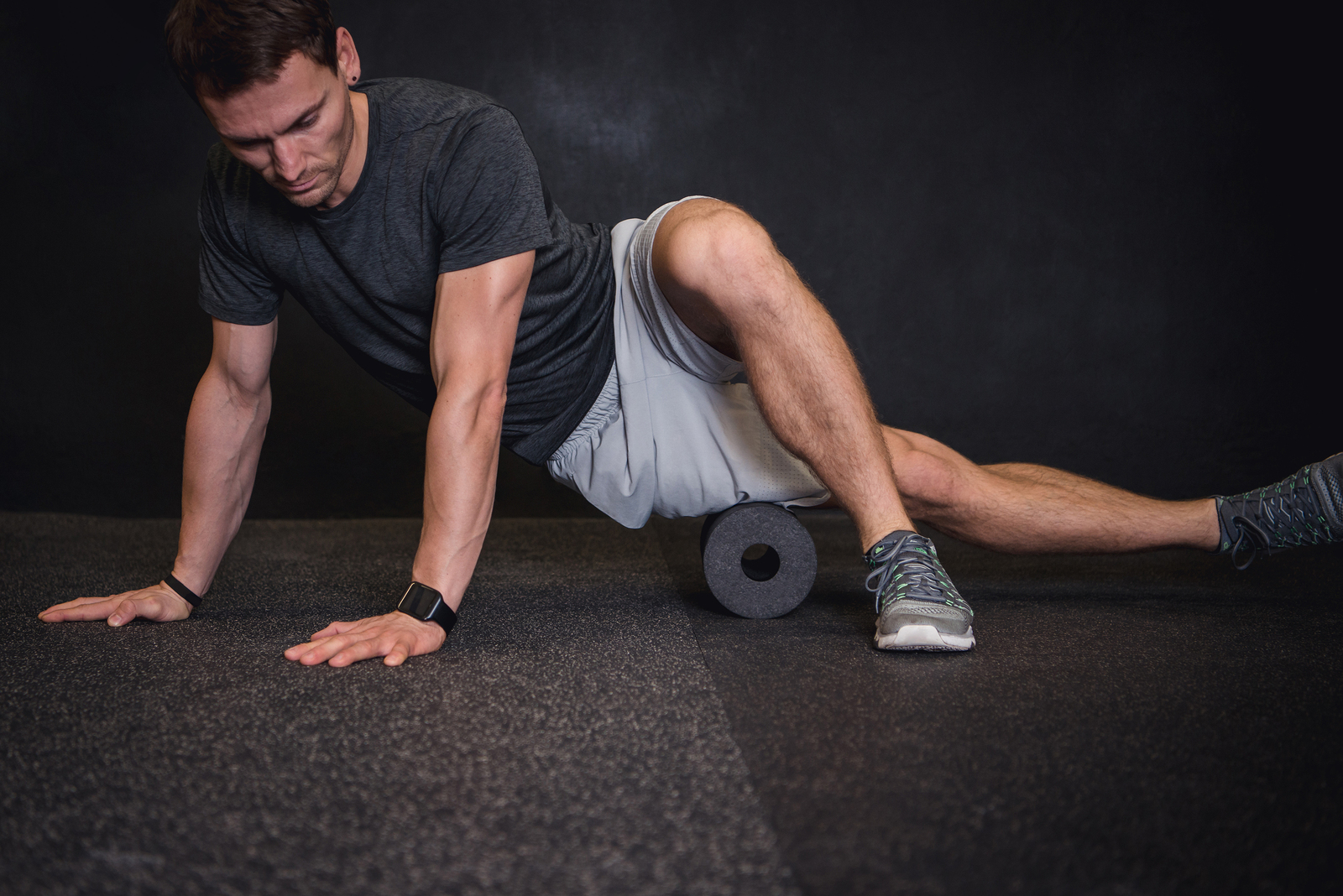
Take a founder, a freelancer, an office worker, and an orthodontist; what do they all have in common? They spend the majority of their workday sitting. Worse, they all likely take part in sedentary out of office behaviors, too—like watching TV, playing video games, or scrolling through social media. According to the World Health Organization, physical inactivity ranks fourth on the list of leading preventable killers, with an estimated 3.2 million people dying each year as a result.[1] The Center for Disease Control reports that we spend 75 cents of every healthcare dollar on chronic conditions linked to sedentary behavior. Why? When we sit, muscles in our lower body turn off and automatically adopt positions that shut off our glutes as well as our trunk and spine muscles. As a result, we experience compromised body function, increased blood sugar levels, and joint and soft-tissue injuries; injuries can vary from neck and back muscle soreness all the way to chronic conditions. Thankfully, there are a number of ways to prevent and/or reduce the adverse effects of sitting that almost every professional can start doing today.
Take a stand
Standing desks are becoming increasingly common in the workplace, and with good reason. Seated office workers have more musculoskeletal injuries than any other industry sector worker. Those who sit for more than nine hours each day are also prone to developing chronic diseases such as diabetes and heart disease.[2] If acquiring a standing desk is not an option for you, there are inexpensive desktop converters that enable you to convert your current desk to a standing desk. Especially for those who aren’t sure if they can manage standing up all day, desktop converters are an easy way to try out this new way of working.
Sit ergonomically
While standing is better than sitting, if you have to sit, do so in an ergonomic manner. To start, practice good sitting habits. When sitting at a desk, your feet should be flat on the floor, and the height of the chair should allow your thighs to angle down slightly. This position will allow you to place your weight through your ‘sitting bones,’ rather than rounding your lower back and causing your shoulders to round and your posture to slump forward. As for your keyboard height, set the keyboard high enough so that your elbows are bent approximately 90 degrees. If the tray is too low and cannot be adjusted, place the keyboard on your desk. Finally, the mouse should be placed at the same level as the keyboard.
A great way to improve your posture while sitting is swapping out your office chair for an exercise ball. While seated on an exercise ball, you engage your core muscles to support your back and maintain proper posture. Plus, it’s nearly impossible to slump forward into that slouching position without risking losing your balance.
Schedule regular breaks
In a recent study published in the journal Sports Medicine, researchers compared the effects of individuals sitting for prolonged periods with those who took breaks from sitting and engaged in light to moderate activity.[3] The results of the study suggest that taking a break from sitting every 30 minutes and incorporating even light activity had significant effects. In those individuals who took breaks, physical activity of any intensity was shown to reduce their concentrations of glucose and insulin in the blood up to 9 hours after eating a meal.
So, whether you sit or stand, taking breaks from your desk every 30 minutes should become part of your normal routine. Remember, even a quick walk to the break room or bathroom will help. Better yet, a 20 minute walk around the office block will promote blood flow that brings important nutrients to all spinal structures and reduce blood glucose and insulin levels.
If remembering to take twice hourly breaks seems unrealistic, put your smartphone to use. Download an app—such as Stand Up! or Sitting Timer—to remind yourself to take breaks from your desk. It may not be possible to get up every time the reminder goes off, but it will help you be more cognizant that you’ve been sitting for a while—and that your health depends on you taking sufficient breaks.
Stretch at your desk
If you don’t have time to leave the office on regular intervals, take your break at your desk and stretch. Depending on the amount of space you have in your work space, a variety of stretches, like ankle and wrist rolls, a hands-over-head stretch, head rolls, and shoulder rolls, will all help relieve the stress sitting causes your body.
Here some ideas for stretches and exercises than can be easily done on or with a chair:
#1 Upper Trapezius Stretch
Begin by positioning yourself in a seated position with one hand on your thigh, the other hand is gently contacting the top of your head. Gently tilt your head forward as your chin drops down towards your chest. Then slightly rotate head to one side until a stretch is felt in neck as the hand on top of your head pulls gently to slightly increase the stretch sensation. Attention should be paid not to elevate opposite side shoulder. Hold for 20 – 30 seconds. Alternate sides.
#2 Seated Figure-4-Stretch
Begin sitting with a straight neutral spine. Cross one leg over other, placing ankle on opposite thigh above knee.
Slowly lower chest down toward knees trying to keep a flat low back. A stretch in hip of crossed leg should be felt. Hold for 20-30 seconds Alternate sides.
#3 Seated Hamstring Stretch
Begin by sitting upright and at edge of chair. Spine is in neutral position with a flat lower back. Fully extend leg so that heel is contacting floor with toes pointing upward. While maintaining a flat back position, lean forward until a gentle stretch is felt behind thigh. Hold for 20-30 seconds. Alternate sides.
#4 Assisted Mini Squat
Activate core muscles. Bend knees, squatting down as tolerated. Return to start position. Hands may be used to assist body in upward movement. Maintain body weight over mid-foot and heels. Knees should maintain alignment with second toe and not glide past feet. Please use a chair WITHOUT wheels for this exercise
Manage inflammation and back pain with supplements
Sitting for the entirety of your workday puts continuous strain on the lumbar spine. Sustained sedentary behavior will cause inflammation in your joints and degeneration of your discs. If you’re reading this after decades of sitting, fear not. There are a number of natural supplements that can help modulate inflammation and manage back pain.
Glucosamine HCL and chondroitin sulfate are natural substances found in and around cells of cartilage. These well-researched nutrients help to form the shock-absorbing components of cartilage and to heal articular surfaces.[4] Glucosamine is an amino sugar that the body produces and distributes in cartilage and other connective tissue. Glucosamine also provides the building blocks for the production of chondrocytes that help produce new cartilage. Chondroitin sulfate is a complex carbohydrate that helps cartilage retain water. Both sulfates have been shown to reduce pain and inflammation and slow cartilage loss.[5]
Curcumin, a substance in turmeric, has been linked to promoting joint health by reducing inflammation. Scientists found that introducing curcumin to the tendon culture inhibited a signaling protein called NF-KB, which can induce further inflammation.[6]
Those who want to reverse the negative effects of sitting should start right away. Switching to a standing desk, taking regular breaks, prioritizing short busts of light activity, stretching, and incorporating anti-inflammatory supplements will all help expedite the body’s ability to recover from long hours spent sitting. Mild back and neck soreness may be just an inconvenience now, but sustained sitting habits can lead to chronic health problems down the road. The time to take a stand against the sitting epidemic is now.
References:
[1] https://www.who.int/dietphysicalactivity/factsheet_inactivity/en/
[2] Harrington, JL, et al. Circulation, 2017
[3] https://link.springer.com/article/10.1007%2Fs40279-018-0963-8
[4] Hardington, T. Chondroitin Sulfate and Joint Disease. Osteo Cart 1998;6 (suppl A):3-5
[5] Hardington, T. Chondroitin Sulfate and Joint Disease. Osteo Cart 1998;6 (suppl A):3-5
[6] Journal of Biological Chemistry – August 2011. “Curcumin modulates nuclear factor-KB”.
Our Story
WebExercises was created by clinicians who wanted to find a better way to help patients succeed with their exercise rehabilitation programs. As clinicians we are limited with time therefore WebExercises was developed to efficiently design exercise programs. We offer an engaging patient experience that can be monitored virtually by the clinician keeping your patients motivated outside of your office. Since 2005 we have delivered over 20 million exercises saving clinicians time and improving patient adherence. To find out more how WebExercises can improve your practice call us 866-411-4825 or visit webexercises.com/join

